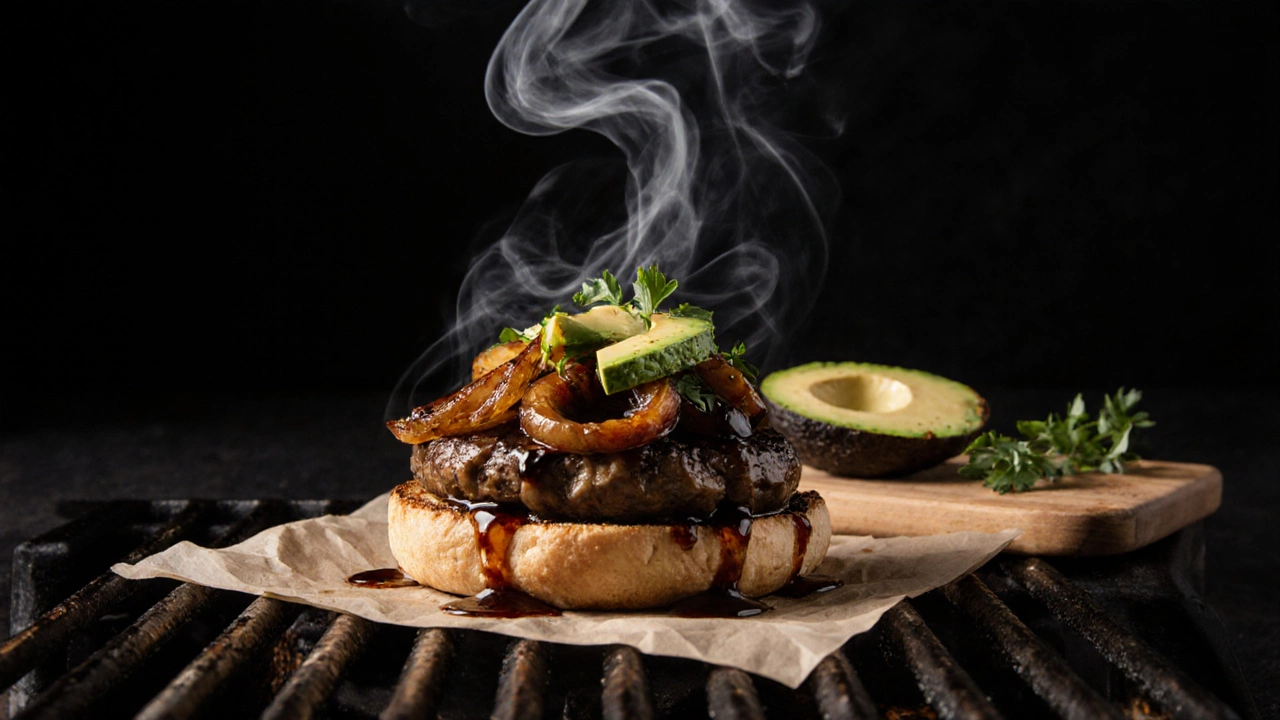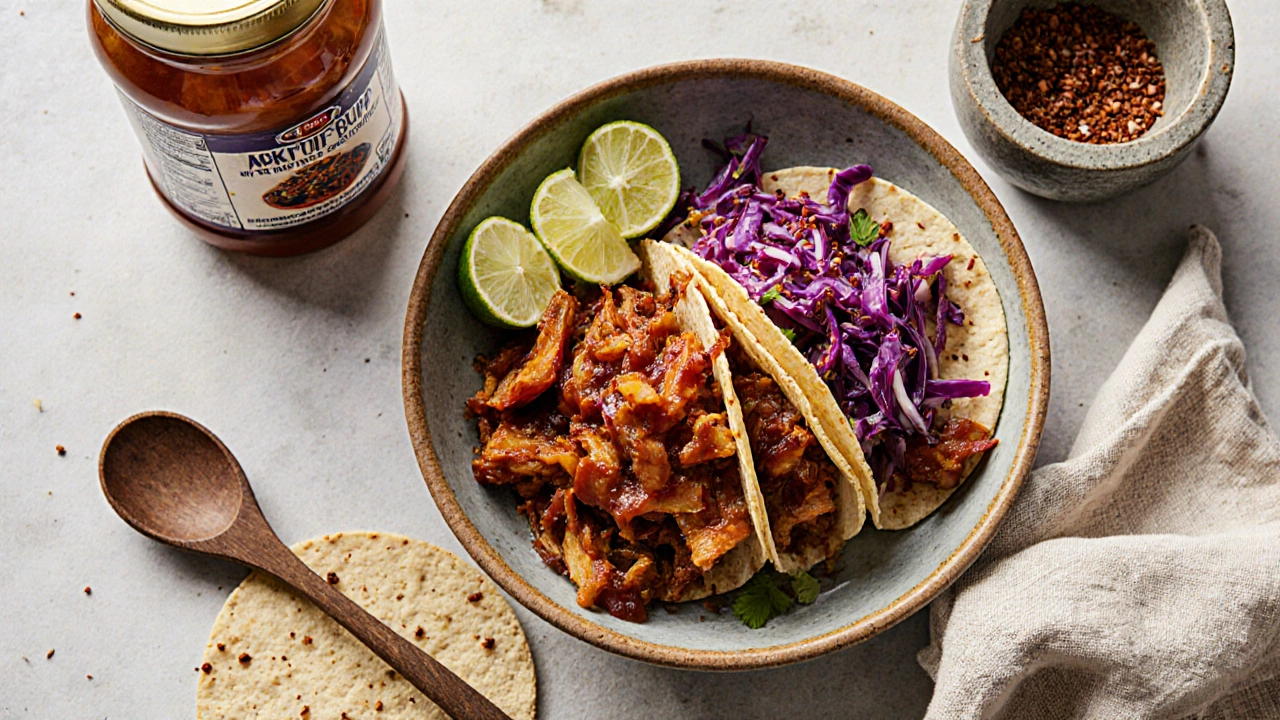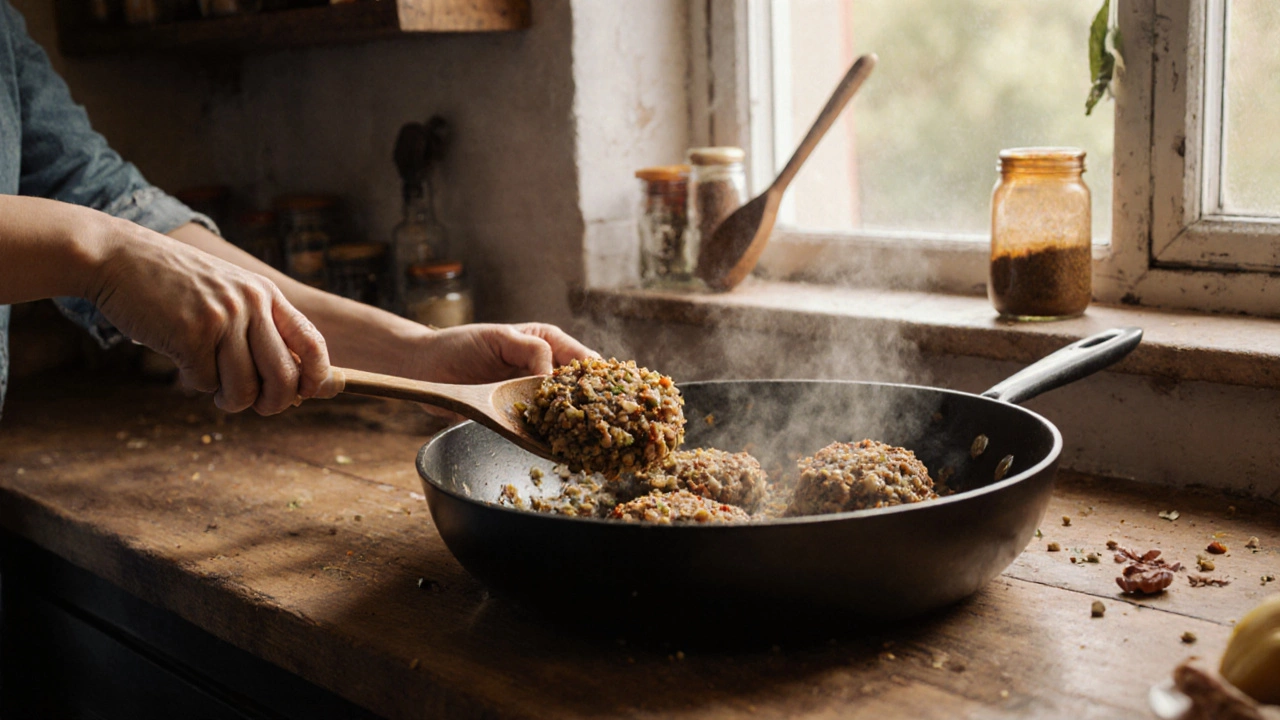Vegan Protein Calculator
Choose Your Plant-Based Protein
Your Meal Ingredients
Your plant-based meal's protein content will appear here...
When you first go vegan, one of the biggest questions isn’t about cheese or milk-it’s about meat. What do you actually eat instead? It’s not just about swapping a burger for a patty. It’s about replacing the texture, the flavor, the satisfaction that meat gives you. And the truth is, vegans don’t just replace meat with one thing. They use a whole toolkit of real, whole foods that do the job better than most processed alternatives.
Beans and Lentils: The Original Protein Powerhouses
Before meat substitutes were a billion-dollar industry, people ate beans and lentils. They still do. A cup of cooked lentils has 18 grams of protein-more than a small chicken breast. Black beans, kidney beans, chickpeas-they’re all packed with fiber, iron, and slow-burning carbs that keep you full for hours. In Mexican kitchens, they’re the base for tacos. In Indian homes, they’re simmered into dal. In Australia, they’re mixed into burgers and baked into shepherd’s pie.
Try this: Cook a big batch of brown lentils on Sunday. Use them all week-in salads, stirred into soups, mashed with spices and formed into patties. No fancy ingredients. Just lentils, onion, garlic, cumin, and a pinch of smoked paprika. Pan-fry them until crispy on the edges. That’s your meat replacement. No soy, no wheat, no lab-grown stuff. Just food.
Mushrooms: The Umami Secret
Mushrooms don’t taste like meat. But they have something meat has: umami. That deep, savory, mouthwatering flavor. Portobello caps, when grilled, have the chewy texture of a steak. Shiitake mushrooms, when dried and rehydrated, mimic the fibrous bite of pulled pork. In Melbourne, you’ll find vegan dim sum places using king oyster mushrooms sliced thin to replace duck in bao buns.
Here’s how to use them: Slice portobellos thick, marinate them in soy sauce, balsamic vinegar, garlic, and a touch of maple syrup. Grill them for 5 minutes each side. Serve on a bun with caramelized onions and avocado. You won’t miss the beef. The mushrooms give you texture, flavor, and a satisfying bite that’s hard to replicate with processed products.
Tempeh: Fermented, Nutty, and Strong
Tempeh is made from whole soybeans that are fermented and pressed into a firm cake. It’s not tofu. It’s denser, nuttier, and holds its shape when cooked. It’s also packed with probiotics and has twice the protein of tofu. Many people write it off because it’s unfamiliar. But once you’ve tried it marinated in miso and maple syrup, then pan-seared until crispy, you’ll understand why it’s a staple in vegan kitchens.
Use it like you’d use chicken: cubed in stir-fries, sliced in sandwiches, crumbled into tacos. It absorbs flavors like a sponge. A quick 15-minute marinade in tamari, liquid smoke, and chili flakes transforms it into something that tastes like barbecue. It’s not a meat copy. It’s something better-real, whole, and alive with fermentation.
Seitan: The Chewy Classic
Seitan is made from wheat gluten. It’s the closest thing to the chew of meat you’ll find without using soy or fungi. It’s what’s used in vegan deli slices, mock duck, and “chicken” strips. But homemade seitan is a game-changer. Mix vital wheat gluten with vegetable broth, garlic powder, and nutritional yeast. Knead it, then simmer it for an hour. The result? A dense, meaty block you can slice, shred, or cube.
It’s not for everyone-people with gluten intolerance can’t eat it. But for those who can, it’s the go-to for hearty stews, sandwiches, and even vegan kebabs. A friend in Sydney makes seitan kebabs with bell peppers and onions, bastes them in teriyaki, and grills them over charcoal. People ask if it’s real meat. It’s not. But it’s satisfying in a way that surprises even longtime meat-eaters.

Jackfruit: The Shredded Star
Young green jackfruit, packed in water or brine, is the secret behind vegan pulled pork and BBQ sandwiches. When cooked, it breaks apart into stringy strands that mimic the texture of slow-cooked pork. It doesn’t have much flavor on its own-which is why it’s perfect for soaking up sauces.
Drain and rinse the jackfruit. Sauté it with onion and garlic. Add your favorite BBQ sauce-store-bought or homemade-and let it simmer for 20 minutes. Serve on a soft bun with coleslaw. It’s messy. It’s fun. And it’s the only plant-based food that makes kids say, “This tastes like the real thing.”
Tofu: More Than Just a Blank Canvas
Tofu gets a bad rap because it’s bland when it’s not prepared right. But pressed, frozen, and then thawed? That’s when it turns into a chewy, sponge-like texture that absorbs marinades like nothing. Freeze a block of firm tofu, thaw it, squeeze out the water, then marinate it in soy sauce, liquid smoke, and maple syrup. Pan-fry it until golden. It’s chewy. It’s smoky. It’s delicious.
Use it in scrambles with turmeric and black salt for a vegan egg alternative. Cube it and bake it for crispy tofu bites. Slice it thin and air-fry it for vegan bacon. Tofu isn’t meat. But when you treat it right, it becomes something even better: versatile, affordable, and endlessly adaptable.
Whole Grains and Nuts: The Hidden Heroes
Meat isn’t just about protein. It’s about bulk. It’s about substance. That’s where whole grains and nuts come in. Quinoa, farro, barley, and brown rice add chew and heartiness to bowls and stews. Walnuts, almonds, and pecans, when finely chopped and toasted, mimic the crumbly texture of ground meat.
Try this: Mix cooked quinoa with finely chopped walnuts, mushrooms, onion, and spices. Form into patties. Bake them. You’ve got a burger that’s rich, earthy, and packed with nutrients. No fake meat required. Just food that’s been thoughtfully combined.

Why Processed Meat Alternatives Aren’t the Answer
There’s a whole aisle in supermarkets now full of vegan burgers, sausages, and nuggets. They’re convenient. But they’re also highly processed. Many contain refined oils, isolated soy protein, and additives you can’t pronounce. Some are high in sodium and low in fiber.
Real vegan meals don’t need to mimic meat. They need to be satisfying. Beans, mushrooms, tempeh, and whole grains aren’t just substitutes-they’re upgrades. They’re nutrient-dense, naturally flavorful, and better for your gut, heart, and long-term health.
What You Actually Need to Start
You don’t need to buy a dozen new products. Start with these five things:
- Black beans or lentils (canned or dry)
- Portobello mushrooms or shiitake
- Tempeh (look for organic, non-GMO)
- Whole wheat gluten (for seitan)
- Young green jackfruit in brine
Keep soy sauce, smoked paprika, nutritional yeast, and garlic powder on hand. That’s it. You can make dozens of meals with just these.
It’s Not About Replacing Meat. It’s About Eating Better.
Most vegans don’t eat plant-based food because they hate meat. They eat it because they love food. They love the way beans taste when slow-cooked with tomatoes and herbs. They love the crunch of roasted mushrooms. They love the satisfaction of a hearty bowl of lentils and rice.
Meat isn’t the only thing that fills you up. It’s not the only thing that tastes good. The world is full of plants that do the job better-without the cholesterol, without the antibiotics, without the environmental cost.
Try one thing this week. Swap your burger for a lentil patty. Replace your chicken stir-fry with tempeh. Try jackfruit tacos. You might find you don’t miss meat at all. You just missed the right way to eat.
Do vegans need protein supplements?
No, most vegans get plenty of protein from whole foods. A cup of lentils has 18 grams, tempeh has 20 grams per 100 grams, and tofu has around 10 grams. Eating a variety of beans, grains, nuts, and vegetables throughout the day gives you more than enough protein. Supplements are only needed if someone has a medical condition or very high protein needs, like an athlete.
Is tofu unhealthy because it’s processed?
Tofu is minimally processed. It’s made by curdling fresh soy milk, pressing it into a solid block, and cooling it-similar to how cheese is made from milk. It’s not the same as soy protein isolate used in fake meats. Whole soy foods like tofu, tempeh, and edamame are linked to lower cholesterol and reduced risk of heart disease in multiple studies.
Can kids eat a vegan diet without meat?
Yes, and many do. The Academy of Nutrition and Dietetics says well-planned vegan diets are appropriate for all life stages, including children. Focus on calorie-dense foods like nut butters, avocados, beans, and whole grains. Include fortified plant milks for calcium and vitamin D. With variety and attention to key nutrients like B12 and iron, kids thrive on plant-based diets.
What’s the best vegan meat substitute for burgers?
Lentil and walnut patties beat most store-bought options. Mix cooked lentils with finely chopped walnuts, breadcrumbs, onion, garlic, and smoked paprika. Form into patties and bake or pan-fry. They hold together well, taste rich, and are full of fiber and healthy fats. Store-bought burgers often contain more sodium and additives than homemade versions.
Why does my vegan food taste bland?
You’re probably missing flavor builders. Umami comes from soy sauce, miso, nutritional yeast, mushrooms, and tomatoes. Smokiness comes from smoked paprika or liquid smoke. Heat comes from chili flakes or fresh chilies. Sweetness from maple syrup or roasted vegetables. Salt and acid (like lemon juice or vinegar) tie it all together. Taste as you cook and adjust. Flavor isn’t optional-it’s essential.
What to Try Next
Start small. Pick one meal this week and make it meat-free using whole foods. Make a lentil bolognese. Swap chicken in your stir-fry for tempeh. Try jackfruit tacos. Notice how you feel afterward-energized? Full? Satisfied? That’s the real test. Not whether it tastes like meat, but whether it makes you feel good.
You don’t need to go vegan overnight. You just need to eat better. And that starts with asking: What can I eat instead? The answer is simple. It’s all around you.

